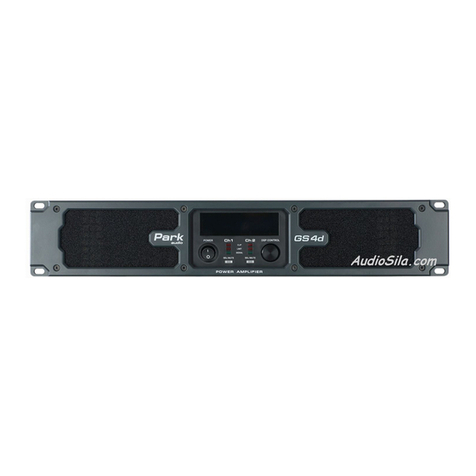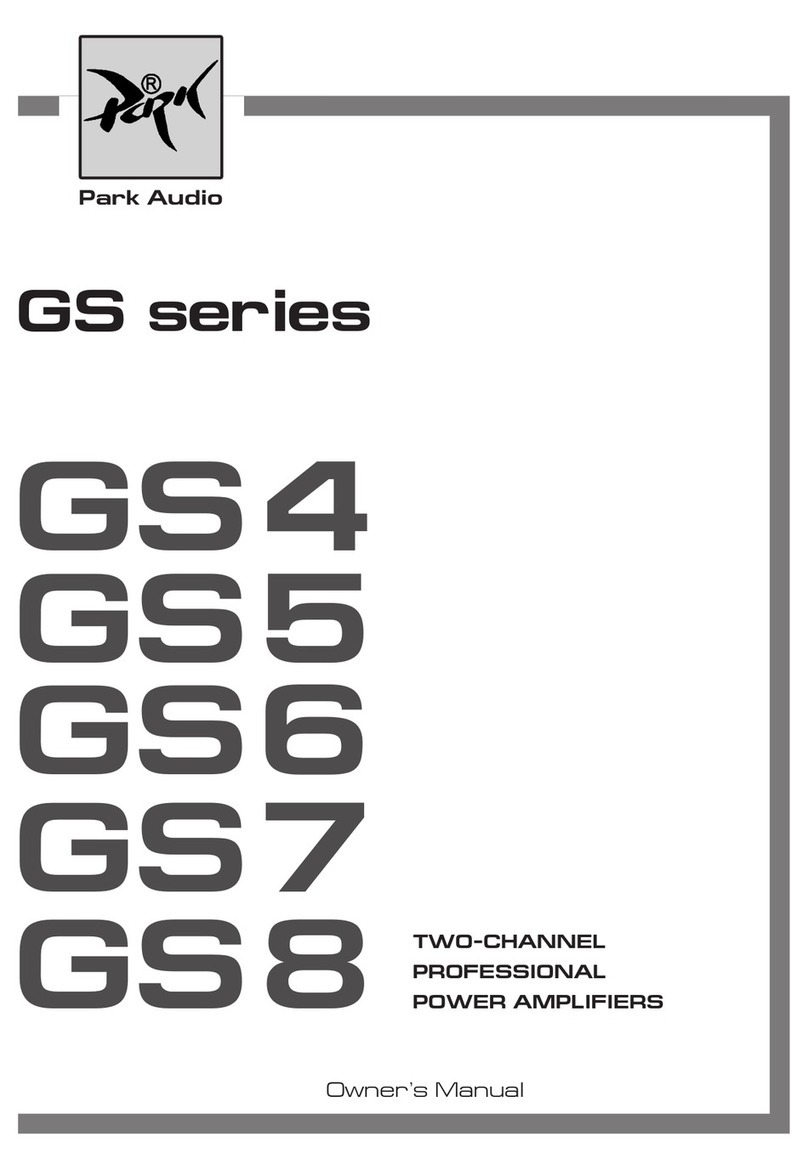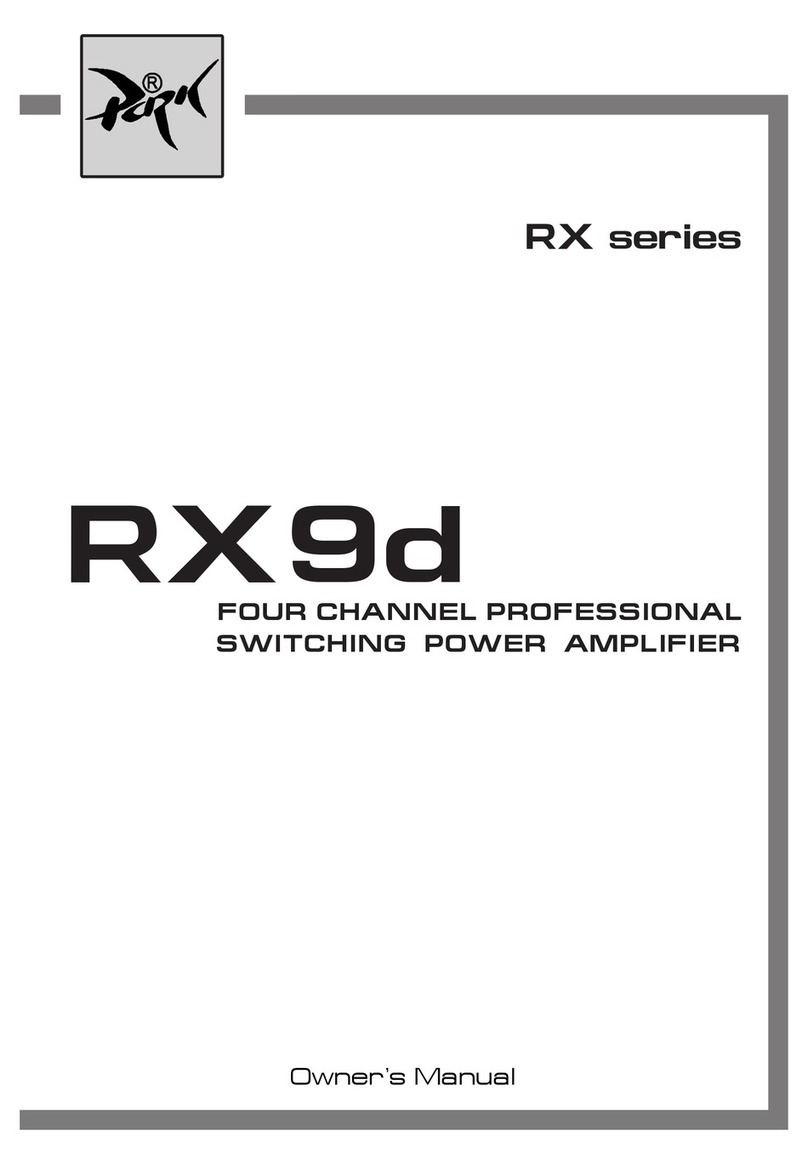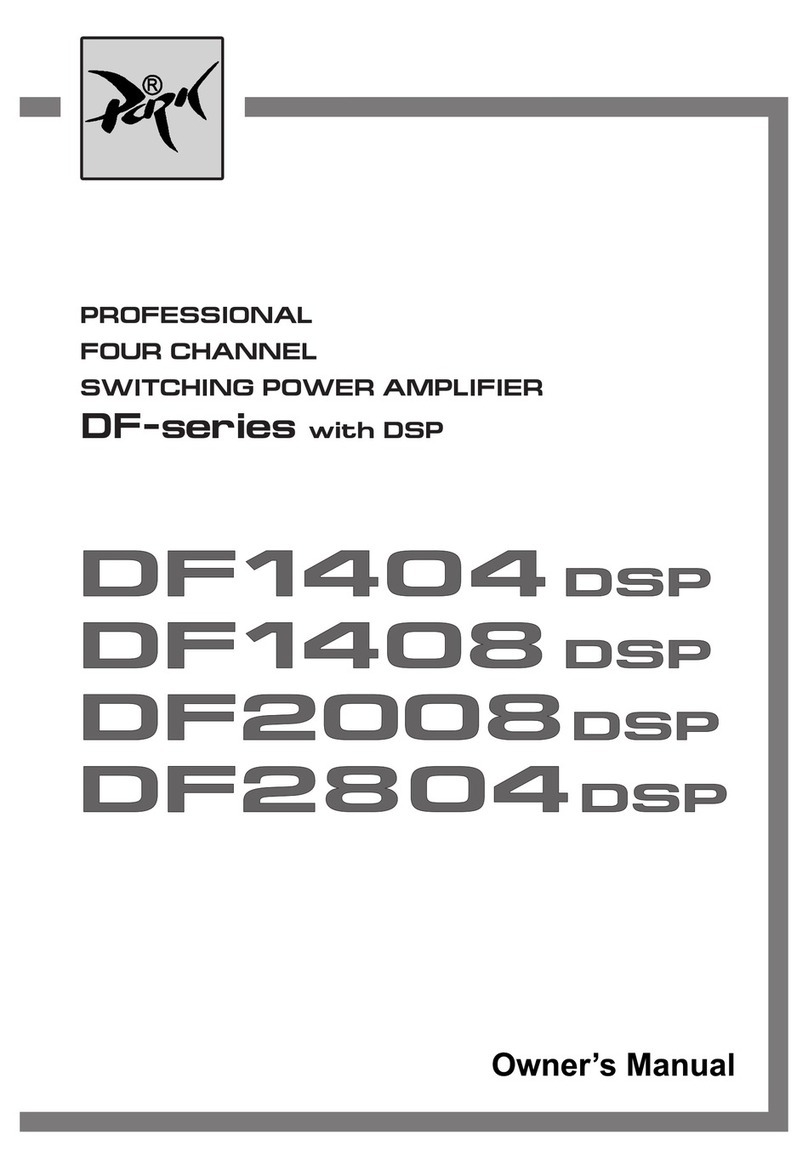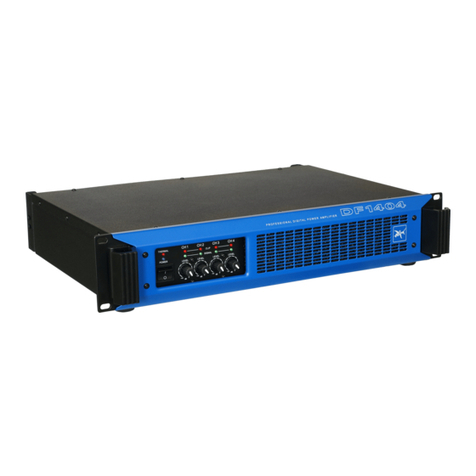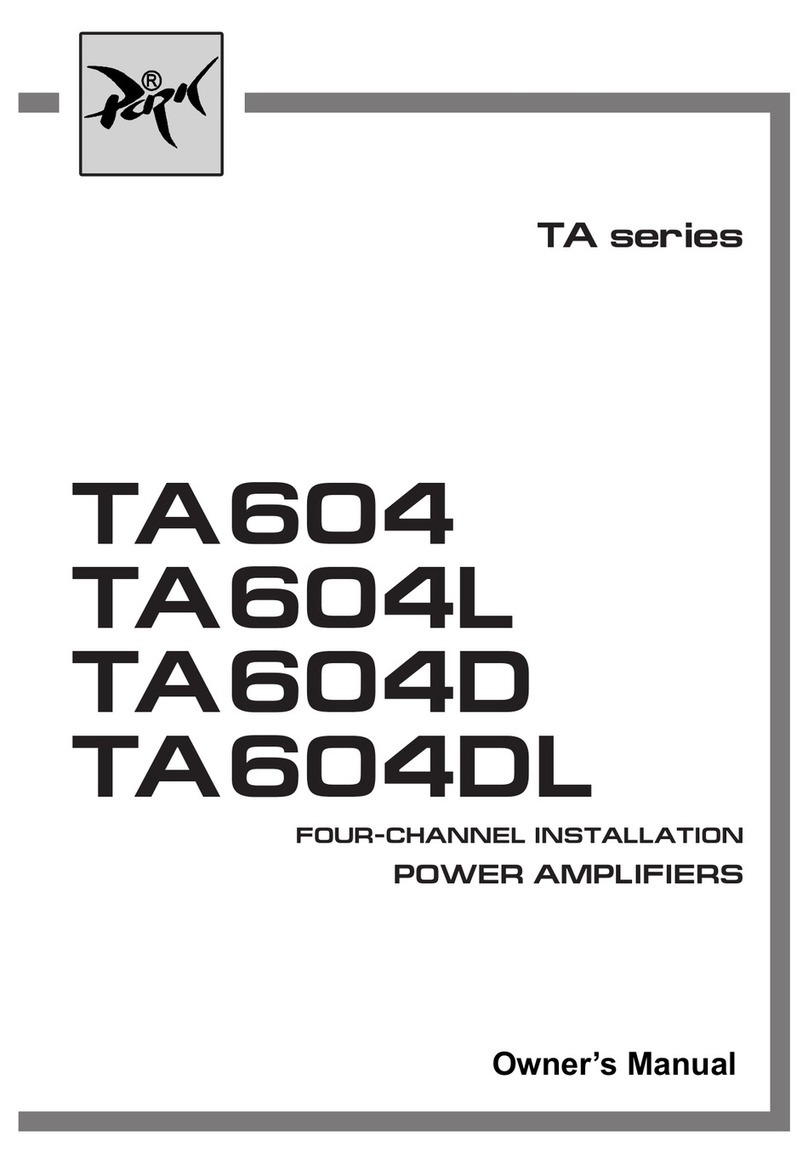3
The DSP preset switch enables choosing various settings for the subwoofer and
satellite channel, created by the DSP sound proceeding.
USB interface enables changing the parameters and presets overwriting.
Overload and Short-Circuit Protection
This protective system becomes active in case of short-circuited output or overload
caused by reduced load impedance. It disables the output signal of the respective
channel for 0.5 second and then the amplifier gradually resumes its delivery.
DC Output Protection
The amplifier’s schematic precludes transit of any clicks or noise during the power-on/
off transition process. Moreover, the amplifier protects the speaker systems against damage
by DC voltage or powerful LF fluctuations in case of their occurrence on the output of the
amplifier. In this case its power supply unit goes OFF and all LEDs go OFF too, including the
POWER LED.
The power amplifier can be restarted by consecutive switching OFF and ON with the
POWER switch. If the DC is an occasional problem (which is unlikely) the amplifier goes ON
and resumes its normal functioning. If, otherwise, the DC output problem persists through
the fault of the amplifier, then upon switching, the amplifier goes ON but in a short while the
DC output protection system disables the power supply unit.
Thermal Protection
The signal may be cut off only in case of the fan breakdown or blocked air flow. If this
is the case, the thermal protection system disables the input signal when the heat sink
temperature has reached 85°С, this fact being notified by the CLIP/THERMAL LED.
The amplifier resumes its operation in the reverse order as soon as it has cooled
down, gradually regaining its gain rate level up to the set value.
DSP engine
Built-in DSP engine accurately handles the audio signal due to its functions of EQ,
filtering, delay and limiter.
DSP enables users to choose between 3 presets for subwoofer and satellite channels
(9 presets in total). Preset parameters are listed in the attachment in the Owner’s Manual.
Any of presets can be modified, using a computer connected via USB interface
(software – SigmaStudio by Analog Devices, Inc.).
The installation package of the SigmaStudio ver.3.10 software (32-bit and 64-bit
program versions available) and user manual can be found on the disk or flash-drive,
supplied with the amplifier.
The SigmaStudio ver.3.10 installation package can also be downloaded from the site
parkaudio.ua (Download section on the pages of the corresponding amplifiers). Moreover,
in the Download section you can find:
SigmaStudio User Manual – user guide on setting built-in amplifiers with DSP by
SigmaStudio (SigmaStudio_for_DF_dsp_UM_en.pdf).
SigmaStudio Video Tutorial – video tutorial about setting amplifiers with DSP by
SigmaStudio.
